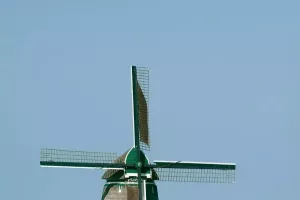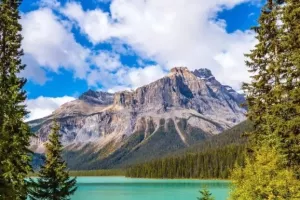Eiffel tower is an iron tower situated on the Champ de Mars in Paris, France. It was named after the engineer Alexandar Gustave Eiffel, whose company designed and built the tower. It was constructed in 1889.
The tower is the tallest structure in Paris and the most-visited paid monument in the world. Every year millions of people visit the structure. But here are 6 things you may not know about the Eiffel tower.
1. The Eiffel Tower was once yellow
In fashionable Paris, even the Eiffel Tower must keep up with style trends. Over the decades, the “Iron Lady” has changed her looks with the application of a spectrum of paint colors. When it opened in 1889, the Eiffel Tower sported a reddish-brown color. A decade later, it was coated in yellow paint. The tower was also yellow-brown and chestnut brown before the adoption of the current, specially mixed “Eiffel Tower Brown” in 1968. Every seven years, painters apply 60 tons of paint to the tower to keep her looking young. The tower is painted in three shades, progressively lighter with elevation, in order to augment the structure’s silhouette against the canvas of the Parisian sky.
2. For four decades it was the world’s tallest structure
At 986 feet, the Eiffel Tower was nearly double the height of the world’s previous tallest structure—the 555-foot Washington Monument—when it opened in 1889. It would not be surpassed until the completion of the 1,046-foot Chrysler Building in New York in 1930. Although the Eiffel Tower eclipsed the Chrysler Building in height with the addition of an antenna in 1957, it still trailed behind another Gotham skyscraper, the Empire State Building.
3. The Eiffel Tower was once the world’s largest billboard
When dusk fell across Paris between 1925 and 1936, a quarter-million colored bulbs attached to three sides of the tower’s steeple illuminated to spell the 100-foot vertical letters of the French automobile company Citroën. The advertisement blazed so brightly that it was visible from nearly 20 miles away, and Charles Lindbergh used it as a beacon when he landed in Paris on his 1927 solo trans-Atlantic flight.
4. Gustave Eiffel designed part of another famous landmark
When the initial designer of the Statue of Liberty’s interior elements died suddenly in 1879, French sculptor Frederic-Auguste Bartholdi hired Eiffel as his replacement. Already renowned as a structural engineer and railway bridge designer, Eiffel designed the skeletal support system to which the statue’s copper skin is affixed. (Today, a scale model of the Statue of Liberty stands on an island in the River Seine in the shadow of the Eiffel Tower.)
5. Parisian artists petitioned against the “monstrous” structure
Although now a worldwide symbol of romance, the radical design of the Eiffel Tower inspired anything but love in the hearts of 300 prominent Parisian artists and intellectuals who signed the following manifesto that ran in the Le Temps newspaper on Valentine’s Day in 1887: “We, writers, painters, sculptors, architects, passionate lovers of the beauty, until now intact, of Paris, hereby protest with all our might, with all our indignation, in the name of French taste gone unrecognized, in the name of French art and history under threat, against the construction, in the very heart of our capital, of the useless and monstrous Eiffel Tower.” The screed even said that the “gigantic black factory chimney” was so loathed that “even commercial-minded America does not want” it.
6. The tower housed a scientific laboratory
Eiffel engraved the names of 72 of the country’s scientists in the tower’s first-level gallery, and atop the structure he installed a laboratory that was used by himself and French scientists to study astronomy, meteorology, aerodynamics and physiology and test experiments such as Foucault’s Pendulum. In 1909 Eiffel installed an aerodynamic wind tunnel at the base of the tower that carried out thousands of tests, including those on Wright Brothers airplanes and Porsche automobiles.


